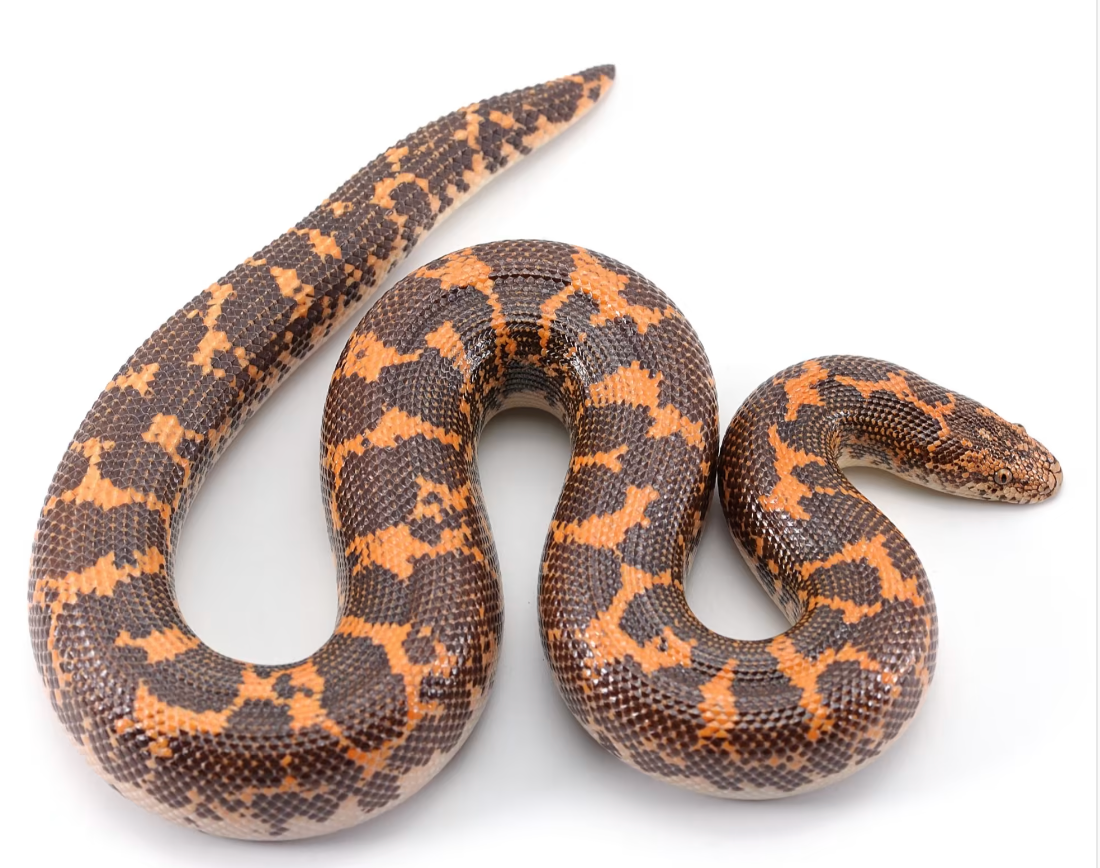There are many reptiles that make great pets, but not everyone is enamored with beardies, ball pythons, and some of the other common choices. For some, the quirky face and curious personality of the Kenyan sand boa are impossible to resist! If this sounds like you and you’ve committed to caring for one of these highly unique animals, it’s important to be sure you’re providing the environment, food, and enrichment that will keep them healthy and happy for as long as possible. Here’s what you need to know about caring for your Kenyan sand boa and what to do if you run into problems.
Understanding Your Sand Boa
Kenyan sand boas are, as their name implies, from Kenya and the surrounding East African region. As a fossorial species, sand boas spend a large portion of their lives in burrows or hiding under rocks and other debris. They prefer to come out at night, but you may occasionally see them up and about during the day. You’ll notice that your snake is overall smooth except for its tail, which is covered in raised bumps. These are called keeled scales, and sand boas use them to get a better grip in the soft soil in which they burrow so that they can move effectively. These scales also help dirt and other debris to cling to the boa, providing camouflage as it sits beneath the surface, waiting to ambush its prey or hide from predators.
Basic Sand Boa Care
Your sand boa relies on you to take care of its basic needs, and to do that, you’ll need to be strategic about everything from what you feed to where you house your scaly pet. In general, you should aim for:
Enclosure Size
In Kenyan sand boas, sexual dimorphism significantly impacts size, which means that females will need a larger enclosure than males. That being said, these boas are active and curious, and even a small male will appreciate the increased size of a female-suited enclosure. Thus, an enclosure measuring at least 36x18x18 is ideal for a sand boa of any sex, and juveniles have no problem starting out in their adult enclosure. Aim for an enclosure that is 36 wide (terrestrial), not 36 tall (arboreal); Kenyan sand boas love to burrow and will appreciate every inch of floor space you provide.
Humidity
Despite the fact that Kenyan sand boas come from desert areas, remember that they spend most of their lives burrowed, where the soil or sand is damp and humid. Thus, your boa will appreciate an ambient humidity of between 60 and 80 percent. This is the most common challenge in caring for sand boas, which is why dehydration and trouble shedding are their most frequent health issues. In addition to the substrate you choose—discussed below—you can regularly mist or dampen the soil as well as provide a moist hide box that utilizes sphagnum moss. Avoid relying on smooth water bowls for soaking, as sand boas are inclined to drown in even shallow water if they cannot grip the bowl enough to escape.
Temperature
The soil in which a sand boa spends its life insulates it from some of the sun’s heat, which means that Kenyan sand boas tolerate cool sides between 72 to 80 degrees. However, the basking spot should offer a range of temps peaking at 95 degrees so that your boa has the option to regulate its temperature as needed. This should provide a proper gradient for the hot side and can be achieved using flood (not spot) lights or a deep heat penetrator.
Lighting
The sunlight in much of East Africa is intense, and Kenyan sand boas are used to the abundant UV rays provided in their natural environment. UV radiation is critical for helping your snake to metabolize calcium and other nutrients that keep it healthy and happy. Place your UV light near your basking platform, as heat facilitates this process. For an appropriately sized enclosure of at least 36 inches, you can use a 22 inch UV strip, such as ZooMed’s T5 HO Reptisun. Ideally, this is placed inside the enclosure (at a safe distance from your snake) to maximize UV exposure. Placing it over a mesh screen filters out many of the usable UV rays.
Hides and Décor
Kenyan sand boas love to burrow, which means that any opportunities to hide, squeeze, or dive into objects will be appreciated. Tight hides, overhanging rock shapes, pots, and logs can all be ideal options for a sand boa. However, despite their normally terrestrial nature, these boas also love to climb, and they will utilize vertical space that you provide. Be sure branches are sturdy, and avoid placing climbing areas above rocks or other hazards—Kenyan sand boas are curious climbers, but they’re not necessarily good at it. Falling from a climbing spot should put them back on their substrate rather than onto something hard that could cause injury. Additionally, be sure any climbing opportunities do not allow your boa to come into contact with interior lights that could result in a burn.
Substrate
“Sand boa” is in the name, but Kenyan sand boas actually shouldn’t be housed in sand. Instead, their native environment is made up of friable soil—that is, soil that is easy to break apart. Sand tends to pack together, which is why sand boas are best housed in a mixture of pesticide- and fertilizer-free topsoil and play sand. This helps the soil to clump enough to hold a burrow while still remaining aerated and easy to move through. Be sure to select play sand, which is washed and safe, as opposed to walnut sand or “desert” sand, which contains silicone dust that can irritate the lungs and eyes.
Food for Kenyan Sand Boas
In the wild, Kenyan sand boas feed on a variety of small prey, such as rodents. Pinkies, fuzzies, and small mice are a staple diet for many, but in their natural habitat, sand boas will enjoy a wide range of prey items to suit their carnivore natures. For this reason, Kenyan sand boas also do well with Reptilinks, since they mimic the variety in their diets that these snakes encounter in the wild. The frog & rabbit links have been popular with Kenyan sand boas, and iguana links can fulfill a sand boa’s natural inclination to prey upon lizards in the wild. Quail is another good choice for a link, because sand boas are known to consume baby birds when they are left vulnerable on the ground.
No matter which Reptilinks you choose, aim for a blend that is suited for carnivores. Micro or mini links may be appropriate for younger specimens, who can upgrade to larger sizes as they age. Remember—a food item should be no wider than the widest part of your snake’s body!
Is My Sand Boa Dehydrated?
Because their desert-sounding name clashes so heavily with their humidity needs, the most common health problems faced by Kenyan sand boas in captivity are a lack of water leading to shed problems and dehydration. If your snake looks wrinkled or lumpy, or if their eyes appear to have creases, these are signs that they are not getting the humidity they need. Their scales may feel coarse or flaky, and opening their mouth may result in thick, viscous saliva strands. Additionally, you may note that their urates are yellow to orange rather than white.
If your boa is dehydrated, the first step is to address humidity concerns. Is your humidity high enough, and if not, what can you do to change this? Consider regularly stirring cup-fulls of water into the dirt. If your humidity is correct, can your sand boa access their water bowl? If it is too slippery and smooth, they may be discouraged from drinking from it because they cannot get a good enough grip or do not feel safe. Additionally, some sand boas react to the chemicals (such as chlorine) used by certain municipal water companies and may turn their noses up at tap water. If your boa isn’t drinking, try store-bought water for a while to see if it helps!

